#scandinavian animal style
Photo

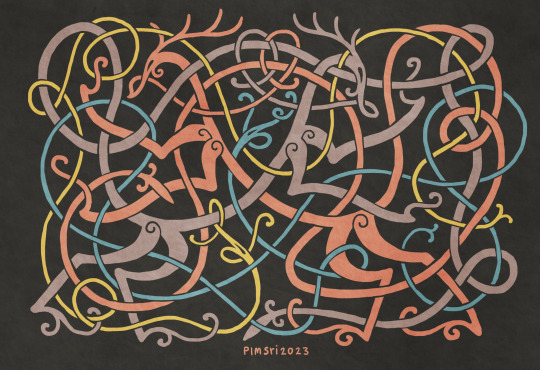

Antlered Urnes Beasts In Love
#they're gay because both of them have antlers lol#urnes beast#urnes#scandinavian art#scandinavian animal style#viking art#pimsriart#pimsriart2023
111 notes
·
View notes
Text
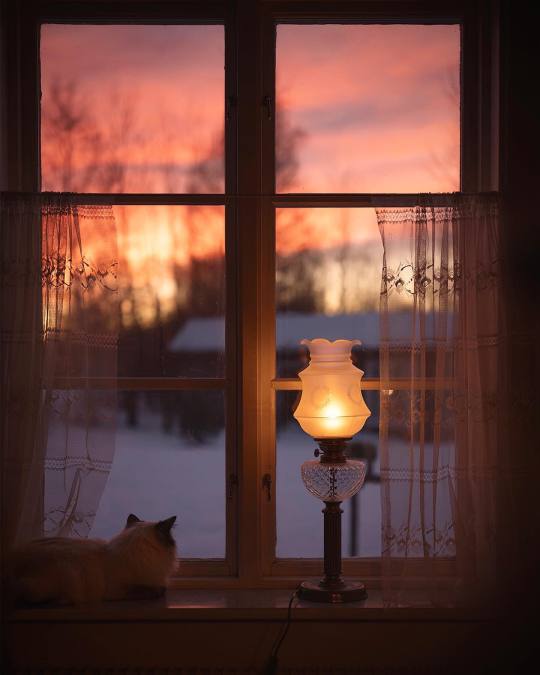
gammsystrar
#winter aesthetic#winter magic#country living#country life#cozy cottage life#country aesthetic#winter window view#winter evening#winter birds#scandinavian winter#scandinavian style#cute animals
543 notes
·
View notes
Text
Thinking about trolls (+elves, huldufólk, others) in light of Eduardo Vivieros de Castro. I'm not willing to say that pre-Christian Scaninavians were perspectivists in Amazonian style, but I do think that looking at Norse religion and later Nordic folklore through that lens is productive.
I'm mostly using the word troll as kind of a catch-all (which is not unlike how Scandinavian folklore uses it, though Icelandic folklore does not).
There are two main fears concerning trolls: that they will eat you, and that they will marry and/or fuck you. In Levi-Strauss's time that might have been seen as symbolically reducible to the same fear, but I think we can learn more by examining them in their distinction.
I dunno that I can summarize Vivieros de Castro's points here, but I'm reading from Cosmological Perspectivism in Amazonia and Elsewhere: Four Lectures given in the Department of Social Anthropology, Cambridge University, February-March 1998.
In western ontology we humans are like animals in that we have bodies, but what distinguishes us is the soul (or the rational mind, or whatever, the details change over time but the point is something distinctive about our interiority), so that for, say, Christian missionaries, "because the spiritual is the locus of difference that
conversion becomes necessary (the Europeans wanted to know
whether Indians had souls in order to modify them)." Sverrir Jakobsson says that Icelanders bought so heavily into the [Christian : Heathen] distinction as the primary ordering principle of the peoples of the world that they had trouble recognizing, or even outright denied, that there was an East-West split in Christianity.
In perspectivist ontologies this is flipped, the locus of differentiation is the body, because the interiority of everything is the same, difference comes from inhabiting different bodies. If you could acquire the sight of a jaguar, you would look at a puddle of blood and see a nice cold beer (but you would also be dangerous to humans, because you would see them as game animals). The resulting anxiety is cannibalism. If everything is the same in underlying essence, it becomes necessary to engage in an active practice of differentiation to avoid eating something that is the same as you. Ritual specialists who can transform into animals are sometimes bad hunters because they are too deeply engaged in this paradox.
The fear of marrying a troll (or elf, whatever) is the fear of spiritual conversion. This is sometimes made explicit: "I don't want to live with elves; rather, I want to believe in my Christ" -- Ólafur Liljurós (note that while this ballad is related to similar ones all over Europe, many of them deal with the protaganist's impending marriage and/or infidelity in some way; this is absent from the Icelandic and it's a purely religious conflict). In Tungustapi, Sveinn doesn't just fuck elves, he also goes to their church (which is a sort of inverted Christian church). He's alienated from the [Christian/human] community. This corresponds to "western ontology."
The other side of this is fear of being eaten. At risk of overthinking things, because being afraid of a scary monster eating you doesn't really seem to need a lot of explanation, I think there are religious/cosmological implications here.
The fear of being eaten by a troll is different from the fear of being eaten by a bear or a boar, because humans also eat bears and boars, we are on the same level with them. You can't eat a troll (we also don't eat wolves, and wolves are trolls' domestic animals, although I guess you could eat a wolf). A semi-human semi-Euhemerized jötunn/troll is associated with cannibalism in Orms þáttr Stórólfssonar. I've written before about the likely etymological derivation of jötunn from a word meaning 'to eat'; previously I said that while *etaną 'to eat' and *etunaz 'jötunn' have a clear etymological relationship, that might not be so a few hundred years later when they have become eta and jǫtunn, but maybe this relationship should be reconsidered.
Eduardo Kohn was once told to always sleep on his back in the jungle, because if a jaguar comes it will see his face and recognize him as a person, but if it sees his back it will see him as prey. To avoid being eaten by a troll you have to get the troll to see you as a person and not as food, you can do this by giving a gift (and initiating a relationship of reciprocity), or else by being more troll-like yourself (maybe even by preestablished kinship with trolls like Egill Skallagrímsson). It's a widely-acknowledge attribute of trolls, at least in Iceland, that if you do manage to get them on your side they are loyal, hence the word trölltryggur 'trustworthy as a troll [=extremely trustworthy].'
The alternate way to avoid being eaten is, of course, to pray to [Thor/St. Olav] to come destroy them with his [hammer/axe]. I don't think this throws off what I'm saying here though, because "extreme violence" is also an option for dealing with humans in a reciprocation-exchange relationship too.
Anyway, my point is that the responses to the two different fears are the exact opposite of each other. You respond to the fear of conversion by never associating with trolls, never falling for the deceit that they are persons like you. You respond to the fear of being eaten by trolls by establishing mutual recognition of each others' personhood.
Contrary to popular belief (which says to never accept any gift from the fey under any circumstances), both of these are represented in folklore. Ólafur Liljurós even presents both of them at the same time, and says it's better to be killed than convert.
There's a big gap in this, which is magical creatures that don't want to eat you but which are still dangerous. e.g., an elf is not going to eat you but you still don't want to piss him off because he'll shoot you with a disease-transmitting arrow. But I think this can get filed along with the fear of being eaten, it's just that because the Eduardos (Vivieros de Castro and Kohn) are themselves talking about cosmological food chains, and I'm working from their material, there's better opportunity for examining trolls that eat people.
150 notes
·
View notes
Note
Can I ask you where have you found inspiration for your art? For example I've noticed you have a very specific (and beautiful) way you draw jewelry and clothing. The shapes are very organic yet grounded at the same time, give a bit of a Nausicaä vibes, as well as art noveau meets iron age.
Honestly I could go on and on about the beautiful details of your art but I don't want to seem too fangirlish :D
Ohhh thank you I love those comparisons 🧡 Because I didn't even know those are the vibes I was going for but yeah that's great actually... This is like when one of you made a playlist inspired by my art... (I still have that saved btw! 🧡 And I still cannot believe!!). Here's a little Rhiam drawing with some jewelry she doesn't (yet) have in canon (earrings she does have but she cannot use them yet)

But what are my inspirations hmmmmmmm many! Idk even what all I have inhaled into my art but I try to list something (this got long so rest under cut):
Nature 🌿 I love both mundane (sparrows, plants growing from asphalt cracks, moss covered street signs... the little details) and grand formations that fill me with awe. There's something about things so vast that take my breath away. Like oceans, mountains, high cliffs, endless tundra, wind so strong you could lean against it, ancient stone that has been scraped visible by massive sheets of ice thousands of years ago. (But I'm guilty of not being that impressed by conventional beauty of average gardens. Aren't people tired of only finding planted blooming flowers beautiful!). Most often I'm drawing inspiration from nature familiar to me, that being Nordic/Scandinavian ones.
I already said nature but birds deserve a special mention! Agh I just love those funky little animals 🦅
Stories! I love making stories, I think they help me grasp and go over my thoughts. I love pouring myself into my characters, it makes them feel both personal but also makes it easier to talk about myself to my fellow storytellers. I'd love to do a long graphic novel or write a book one day, but I also love making ttrpg stories just for and with our little group 🧡 For a long time I felt kinda bad that I wasn't doing "real art" that wasn't just illustrations of my characters. But then I realised doing art for arts sake doesn't really inspire me. I don't want to do art that I'd think would be easily consumable nor do I have any great performance to create with my art. I just love to illustrate stories and tell stories through my art and I think that's great! I still love seeing and experiencing artworks that aren't this illustrative, I just don't have the motivation to do that myself. But I can get really excited of works like Emma Jääskeläinen's granite sculptures!
Other artists! There are two categories I think: 1) those whose work I've seen (usually irl) and whose technique or themes or symbolism facinates me. I usually don't want to create similar art, or replicate their style, or medium even. But there's something about them, a feeling of awe or they feel formidable. Or there's something clever about them that lets me have this sense of epiphany. For example, Jääskeläinen who I already mentioned, Marcel Dzama, Merja Palin, Helena Vaari, Marika Mäkelä, to name a few I've seen lately-ish. And then 2) there are artists whose stories and/or style inspires me and influences my art. One of the biggest inspirations to my softer line art style was and is @albabbgg. @serpentface has some really cool worldbuilding and designs, I think they were also a great influence to how I draw bodies these days. @wiltkingart has also very cool shapes and genders in his paintings. @sanctus-ingenium 's stories and art have been a huge inspiration lately. And to list a few others now that I started: @pangur-and-grim/@greer-art, @beidak-art, @elemei, @emilylorange, @pansylair, @cy-lindric, @psrj, @lokorum
And many others I'm probably forgetting now! I also have a side blog @sancta-cessatrix where I occasionally reblog cool art, check tags #art #inspiration
#ask#I hope you all don't mind me tagging you but I wanted to give links! Hi big fan long time listener first time caller!#Rhiam
106 notes
·
View notes
Text
An Unexpected Norse Detail in Winterfell
I was scrolling through tumblr yesterday, as you do, and suddenly paused on a gifset of the Lannister party in Winterfell during the early episodes of season 1. What caught my eye was this:

Behind the long table in Winterfell's great hall is some kind of large wooden screen/divider featuring some very interesting carvings. These carvings are near identical to those found on the Urnes Stave Church in western Norway, which dates from the 12th century:
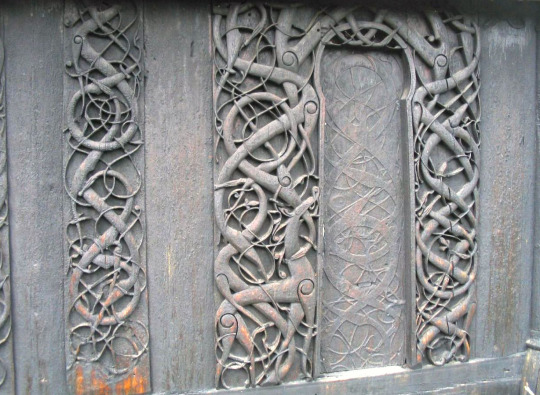
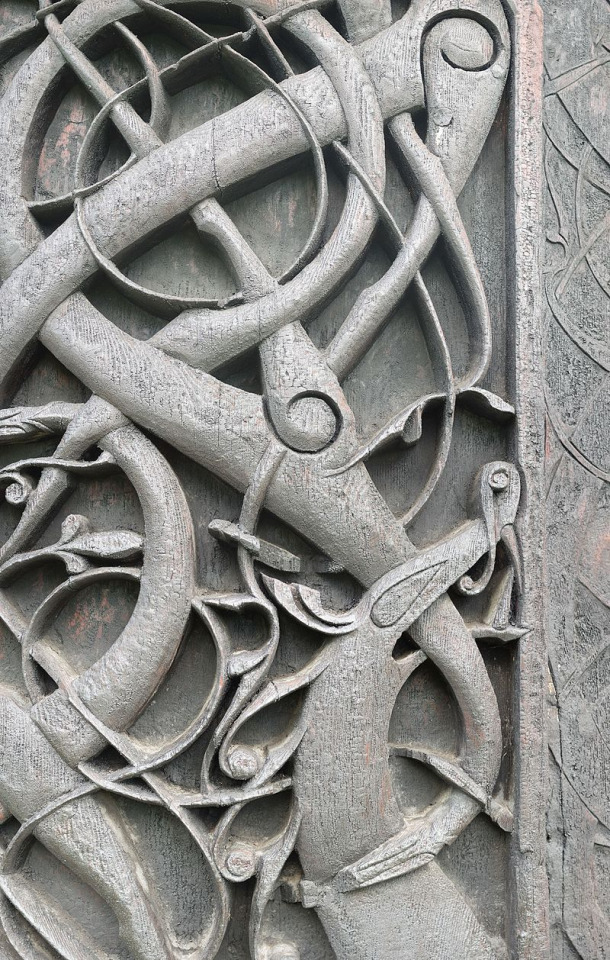
I don't think we ever see this wooden screen in Winterfell again, but it's an interesting inclusion nonetheless, back when the show stuck more closely to the source material.
In The Vikings (Penguin, revised edition, 2016) Else Roesdahl talks a bit about this particular style of ornamentation:
The Urnes style is the last phase of the long development of Scandinavian animal ornament. This seems to have developed shortly before the middle of the eleventh century and was popular for nearly a century, that is into the early Middle Ages. After a final phase where it gave rise to details and influences in Romanesque art, now predominant in Scandinavia, it had died out completely before the year 1200. Many other forms of Viking Age followed the same course.
The vigour and vitality of the Ringerike style gave way to this sophisticated, elegant, indeed almost decadent, style. It is named after the exquisite wood carvings that were re-used in Urnes Church in western Norway: a portal and a door, two wall planks, a corner post and two gable ends, one complete [...] The large, four-legged animal is still one of the main motifs, but it has become as slim as a greyhound. Snake-like animals with one foreleg, snakes and thin tendrils sometimes ending in a snake's head are also featured. The designs characteristic of this style form open, asymetric patterns, creating an impression of an undulating interweaving of animals and snakes. The large loops are often figures-of-eight and the shapes grow and diminish evenly; there are no abrupt transitions. The style is also used with virtuosity on brooches and on large numbers of rune stones in central Sweden, where the undulating ornament follows the shape of the stone and the long bodies of the snakes are used as rune bands [...] Several examples of the style have been found in England, and in Ireland it became as popular as the Ringerike style.
What's so intriguing about the original carving though is that it is depicting pagan symbolism... but on a Christian church. As mentioned above, the Ringerike style predate Urnes and was "roughly contemporary with the intial spread within Scandinavia of Christianity, and was the first to contain Christian iconography, although pagan symbolism was still present," notes Philip Parker (The Northmen's Fury, Vintage, 2014). By around 1050, it gave way to the Urnes style, named for the stave church shown above.
But what do these carvings mean? In Tree of Salvation: Yggdrasil and the Cross in the North (Oxford University Press, 2013), G. Ronald Murphy offers this explanation:
The door is simply surrounded with whorls of writhing snakes and vines. The tangle is so perfectly executed in a welter of animal elongation and plant reduction to vines, that it is difficult to identify where a head begins or where a tail finally ends, if at all, or to trace what seems like a joint to a neck or a leg or a vine. The main point seems to be the inter-twined-ness itself of all living things, animal or vegetable, in one huge tangle [...]
Now as one looks at the left side of the doorway there is one animal standing on four legs [see above!] that is simply startling in the clarity of its depiction. It has been called a lion and explained as the Lion of Judah (Christ) fighting with evil. I think that such an interpretation makes the mistake of using an inappropriately biblical explanation when the artist, by his very Viking-like pictorial style as well as his tangle of animal and plants, tells you he is here using a Germanic one.
If you look at the animal you can see that he is eating at the vine or branch which in turn is a serpent biting at him in the neck. Look at the animal's head and you can see two small horns protruding—that animal is a young male deer, a hart. Now it becomes clear it is not the Old Testament that is giving the context here for the meaning of the portal: this is an allusion to the Elder Edda and its description of Yggsdrasill as the suffering tree with many serpents forever biting on its twigs and branches, as those twigs and branches are also being devoured by a hart. The traditiona of the single deer may also come from a previous stanza in the Grímnismál where the hart is named:
Eikþyrnir [Oak-thorn] is the hart's name, who stands on Father of Hosts' hall
and grazes Læraðr's [kenning for Yggdrasill] branches;
and from his horns liquid drips into Hvergelmir [seething cauldron],
from thence all waters have their flowing (Poetic Edda 55 and 270n)
According to Murphy, "to enter the door of the Urnes stave church is to enter Yggdrasill." So, to bring this back to the world of asoiaf, it´s an interesting piece of set design to include this screen or divider in Winterfell, a place closely connected with the "old gods" of the north and that has its own world tree, in a sense: the weirwood tree, or heart tree, of the godswood. Moreover, beneath one of Yggdrasill's three large roots is the spring Hvergelmir (mentioned above, meaning 'seething cauldron'), beneath another is Mímisbrunnr ('Mímir's well) and beneath the third is Urðarbrunnr ('Well of Urðr'), this is interesting to note in parallel to the hots springs and ice-lidded pool in Winterfell's godswood, close to its heart tree.
In the Prose Edda, one of our foremost sources on Norse mythology, Yggsdrasill is also connected with Ragnarök, the doom of the gods. In chapter 54, it is told that Óðinn will ride to the well Mímisbrunnr and consult Mímir on behalf of himself and his people. After this, "the ash Yggdrasill will shake and nothing will be unafraid in heaven or on earth," and then the Æsir and Einherjar will don their war gear and advance to the field of Vígríðr. In asoiaf, the north has its own legend very reminiscent of Ragnarök, called the Long Night and I've written about their similiarities before and keep meaning to return to that.
Anyway, I just think it's pretty cool they included that detail of the Urnes style screen in Winterfell — I'm always putting Norse details into my fics wherever I can, most recently the Oseberg tapestry.
#cappy's thoughts#yggdrasil and the heart tree#winterfell#historial influences in got and asoiaf#asoiaf and norse mythology#IT IS THE SAME DESIGN i can't believe i never noticed it before?
56 notes
·
View notes
Text
911 does anyone have that comic that has an animal metaphor about Irish/German/Scandinavian immigrant identity being swallowed by conformity with the WASP supremacy mindset and they’re depicted as mice or rats and then (animal farm style) end up mimicking their once-oppressors? I feel like it might be an excerpt of Maus but it used to be a post on here
20 notes
·
View notes
Text

Gold Spur
Viking, 793–1066 CE
The gold spur is the only one of its kind from Viking-era Scandinavia. Covered in intricate patterns in gold, pearl thread, and soldered gold grains, it depicts animals and patterns in the Viking age Borre style. A Scandinavian jeweler probably made it in the second half of the 900's. One theory is that the spur was made in a Danish royal workshop.
24 notes
·
View notes
Text
Tech's Helmet: Im finyish go fo Belta
So, a major plot point in Far Past the Ring is the simple fact that the layout and design of Tech's unique trooper helmet was copied, and taken back to the Ring Gate, where Belters have gone absolutely bananas over this fancy and ingenious design.
Belters live their lives in space completely, and having a helmet that is safe, comfortable, and practical, is crucial as life itself. In The Expanse, Belters often slap stickers or write their names on their helmets. I imagine, with more time and wealth, more decorations can take part, and it's a big plot point in the longfic, especially for Tro, pictured below in the bottom right.
Here's the OCs who have taken Tech's helmet design (which is called the 'Tekimang' style.
FYI: Tekimang is the Lang Belta word for an engineer, it literally translates to 'tech-man'! It becomes an ongoing joke that it's Tech's full name, lol.

Front view of the helmets.
Sjael Drummer: A chemical engineer who focuses on creating synthetic and organic sweeteners for human consumption, Sjael’s helmet is covered in elaborate flowers and fruits that she works closely with. You will see strawberries, blueberries, vanilla, and blossoms from potato and carrot plants. They are done in mixed Ojibwe/Rosemaling style, to signify her mixed First Nations and Scandinavian Earther heritage. I also designed it to also signify her archetype as Persephone and Idunn (coincidentally, the name of her Mulan-class gunship), bringers and guardians of life and all things green and growing.
Timon Chapelle: Timon is a firefighter, through and through. His helmet is covered in almost brutalist paintings of flames and ropes, all in reds, oranges, and yellows. The ‘ropes’ on his cheeks are almost Celtic in design, as in some ways, he is a keeper of multiple facets of knowledge as a Belter elder.
Hobbs Chapelle: “If an elementary school kid designed a helmet”. Hobbs is obsessed with animals, especially his two pet cats, and becomes enamored with the idea of Wookiees and other sentient species after meeting clone troopers from the 41st. He not only has his cats' paws on his helmet's front, but a stylist design of Wookiee handprints and claw marks on the ears and visor, made to look like they were painted with mud. The circles on top of the helmet signify his homes of Ganymede, Ceres, and now Medina Station.
Tro Chapelle: A budding artist and high school freshman, Tro’s helmet designs is all over the place, as are her interests. Very much a teen's notebook style, a girl still figuring out her place in the universe. Her helmet's ears have the design of her great-grandmother’s ‘freedom quilt’ from Earth that was destroyed in the Ganymede attack. Her visor has her name in Ojibwe from the Drummer side. The rest of her helmet is covered in various paint jobs to symbolize elements of fire, air, water, and earth–things that she is thrilled to see now that she is on the station.

Side view of the helmets.
Tagging my Belter loving beratnas out there: @skellymom @thecoffeelorian @supremechancellorrex @sued134 @amalthiaph @littlefeatherr @eyecandyeoz @eelfuneral @notavalidusername @sometimes-i-talk-a-lot @rocicrew @perfectlywingedcrusade @autistic-artistech @that-salmonberry-punk @dukeoftheblackstar @freesia-writes @just-shower-thoughts
#tbb#cloneforce99#thebadbatch#the bad batch#theexpanse#the expanse#belter#fanfiction#starwarsfanfiction#helmets#tech's helmet#clone trooper art#clone trooper#clone trooper reference#belters#beltalowda#for the belt#we are the belt#armor design#oc art#oc character#oc artwork#original character#my art#digital art#artists on tumblr#oc artist#ojibwe art#indigenous art#celtic art
16 notes
·
View notes
Note
What daily things do you find your gods in? For example, finding Freyr in the sound of a bird's song or Loki in the flames of a fire. It'd be cool to see a list of your associations for them. c:
Personal day-to-day associations with the Gods
Óðinn: the traditional Scandinavian music I listen to, reading books, hearing or telling stories, darkness in general (like after having closed all the lights in the house), red wine and strong alcohols such as spirits, local woodland berries such as currants, gooseberries, blackcurrant (etc).
Yngvi-Freyr: cooking/baking (especially traditional food), windy days, hikes in the woods, fall colors, sunsets, road trips, picking flowers, light rain, gardening, the countryside, cold tea, the moment when spring becomes summer.
Thórr: doing manual work, beer, dusk, taking well deserved breaks from work, cloudy days, evergreen trees, disconnecting from technology and reconnecting with the open air, eating or cooking red meats, weather events ranging from light snow to strong rains, singing at the top of my lungs, joking around with friends, going to the bar after a hard week’s work, celebrations in general.
Freyja: showering and taking baths, perfumes and anything fragrant, eating fruit, doing a skincare routine or buying a new skincare product, collecting fallen tree leaves, visiting a pagan shop, practicing magic, warm colors and especially red, petting cats, having funny exchanges with friends and sharing current concerns with them.
Frigg: learning traditional crafts, attending local events, speaking with elders, enjoying a moment of harmony with family, feeling at home, cooking or baking, browsing through farmers’ markets, telling a loved one I love them, doing nostalgic stuff to reconnect with my childhood (such as watching children’s movies!) and doing divination, especially tarot.
Baldr: the color blue, cloudless skies, very cold days, whenever I see springs or waterfalls (which doesn’t happen that often but still!), seeing children play, birds’ song, listening to soft music such as flute, harp or lyre, whenever I willfully build up self confidence (I always feel like He’s the one encouraging me).
Loki: listening to classic rock or power metal, starting bonfires or woodstoves, fire in general like playing around with a lighter or matches, playing pranks, making spontaneous decisions, puzzles and riddles, masks though I’m not certain why.
Týr: seeing fur garments such as fur coats or winter clothing, traveling by boat, camping in thick and isolated woods, browsing through medieval shops, wolf imagery, cuddling up by a fire after a cold day spent outside, whenever a battle scene comes up in a movie or show, celtic music but I’m not sure why I make that association honestly!
Hel: gothic-style clothes, incense, skull imagery, practicing magic and divination, spirit work, ancestor work, visiting loved one’s graves and leaving flowers, graveyards in general (especially those in small villages), learning about different spiritualities and the way they each envision the afterlife.
Heimdallr: caring for animals, spending alone time outside, climbing trees or rocks, high places in general, reading through the Völuspá, making the effort to listen instead of speak, making a kind gesture randomly, helping people in general.
Skaði: hiking in the mountains, stays at cabins, exploring woods, staying at very unpopulated areas, evergreen trees and especially spruce, watching snowstorms, meditation, hearing/reading mythological stories, winter comfort foods such as soups and meats, stargazing.
Eir: herbalism, learning about local plants and trees, brewing potions, caring for a sick loved one, kitchen witchcraft, and something we call “grandma recipes” over here, that consist of dubiously scientific medicine (lying on your left side to heal an upset stomach quicker, using potato peels against warts, etc). I’d have to make a whole post to list those out. These types of medicine tricks that seem mysteriously effective ahaha!
These are only a few of my deities, but they’re the ones I feel closest to these days.
#ask#asks#norse paganism#norse gods#deities#deity work#heathenry#spirituality#polytheism#norse polytheism#witchcraft#upg#personal#paganism
138 notes
·
View notes
Text
Roll for build challenge
Inspired by @hiphiprenee over on tiktok I made my own Roll for build list. I am mostly using her lists but I have modified them, since I am not building for content, I want houses I actually want. You are all welcome to use or modify it all you want.
You can either roll everything beforehand or do a few rolls and build, and then give yourself another challenge. Roll either a physical die or a online dice roller.
I have tagged my build I do with this as #roll4build on the gallery and I am macthekat82 on there as well.
Type of build
Micro home (4-32 tiles)
Tiny Home (33-64 tiles)
Small home (65-100 tiles)
Starter home (max §20.000 + 2000 per bed)
Regular home
Lavish home
Open concept or closed concept?
Open concept (Even)
Closed concept (odd)
Household type
Single sim
Couple
Family
Roommates
Style
Cape cod
Contemporary
Shotgun
Mid-century modern
Victorian
Tudor
Georgian
Mediterranean
Cottage
Container or mobile home or pre-fab
Colonial
Craftsman or arts-and-craft
Ranch
A-frame
Bungalow
Abandoned
Tropical
Farmhouse
Roll for twice
Dealers choice
Colour scheme
Earth tones
Natural materials
Pastel
Cool tones
Jewel tones
Monochromatic
Bold
Duo chromatic
If you want more of a challenge do as many of the following as you feel like.
Exterior features (roll twice)
Pond
Vegetable garden
Sandbox
Patio
Porch
Driveway or garage
Shed
Hot tub or pool
Fire pit
BBQ area
Play area (monkey bars, swing set etc)
Craft area
Tower, spire or turret
Chimney
Second structure
Basement
Greenhouse
Farm animals
Roll one more time!
Dealers choice
Interior style (reroll if you don’t have the items for it)
Cottage chic or cottagecore or English country
Southwestern
Minimalist or modern or Asian Zen
Mid Century modern
Farmhouse - modern or traditional or French Country
Maximalist or Bohemian
Transitional Style (traditional + modern elements)
Eco friendly
Traditional japanese
Shabby chic or coastal
Very gendered
Hollywood Glam or Hollywood Regency
Rustic
Industrial
Child friendly or child centered
Scandinavian
Mediterranean or middle eastern
Art Deco
Grandma chic
Dealers choice
Bonus room/area
Office
Storage room or pantry
Gym
Art studio
Nursery
Game room
Home theater
Music room/studio
Craft room
Guest bedroom
Greenhouse
Hidden room
Spice roll
No CC
Travel
So many plants
Ups another child
A dark secret
They really love cooking
Pets are the best!
Obsection!
A big collection
SPORTS!
A lot of clutter
A supernatural lives here
51 notes
·
View notes
Note
What do you look like? If I may ask 💕
Of course 🥰
I'm tall (6'4), white (scandinavian) with short brown hair.
I wear glasses, and give off a kind of nerdy grandpa professor-ish vibe (thinning hair on very top to match)
I have more of a cute face than a defined one, but I'm finally starting to not look 14 anymore now that I'm in my mid 20s. I think i kinda look like a bird as far as animals go but idk haha
My outfits aim for scholarly but not preppy/old money, so usually chinos and a layered solid color tee and unbuttoned button up.
I was always very narrow and scrawny growing up but the past year ive filled out some and been doing strength training some for the first time. Still not super toned and chiseled, my tummy is still soft, but there are now muscles underneath the cushion lol. I'd like to get a lean-muscular style of body eventually but still working on it
Lemme know if i can add anything else 😇
9 notes
·
View notes
Text



Tom was named after Brazilian musician Tom Jobim, one of the writers of the song "The Girl from Ipanema" (along with Vinicius de Moraes, the namesake of Olympic mascot Vinicius). Vinicius's design represents Brazilian wildlife, combining "the agility of cats, sway of monkeys and grace of birds." The character's arms and legs can stretch unlimited distances. Vinicius's mission is "to spread joy throughout the world and celebrate the friendship that flourishes between people from all over the world" at the Olympic Games.
Sondre is based on the trolls depicted in Scandinavian folklore. The one-legged skiing troll was created as a result of a nationwide competition among schools, with the winning design handed in by Janne Solem. In a separate competition, the name “Sondre” was chosen for the Paralympic mascot as a reference to Sondre Norheim, one of the pioneers of modern skiing.
Sumi was the mascot for the 2010 Winter Paralympics. He is an animal guardian spirit with the wings of the mythical Thunderbird and legs of an American black bear who wears a killer whale-like hat in the artistic style of the Haida people.
24 notes
·
View notes
Photo
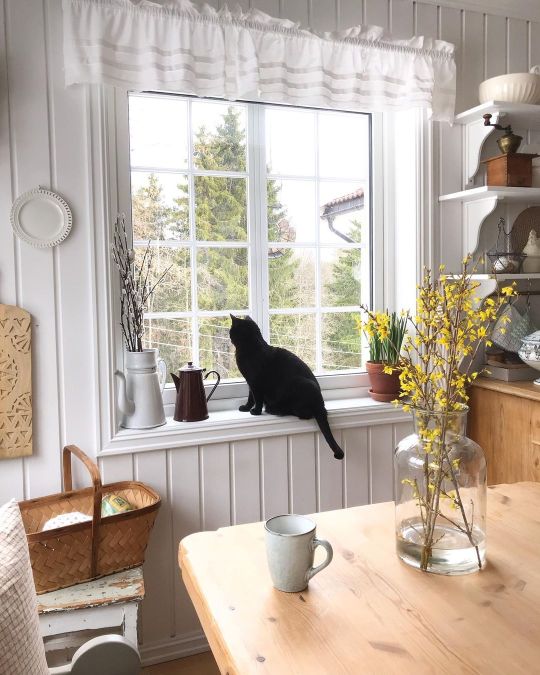
livoghjem
#window view#spring window#spring cottage#spring awakening#spring aesthetic#spring atmosphere#cute cats#cute animals#spring bloom#country living#country aesthetic#cozy cottage life#cottage core aesthetic#spring view#cottage interior#scandinavian style#scandinavian cottage
758 notes
·
View notes
Text
youtube
1. Situating the Story with the Score: Frozen masterfully intertwines its score with its narrative, enhancing the emotional depth of the story. The orchestral arrangements, composed by Christophe Beck, effectively convey the sweeping landscapes of Arendelle and the inner turmoil of its characters. According to film critic Stephanie Zacharek, writing for Time, the score "immerses us in a chilly, forbidding world," echoing the isolation experienced by Elsa and Anna. Furthermore, the integration of Broadway-style musical numbers, such as "Let It Go" and "For the First Time in Forever," propels the plot forward while providing insight into the characters' motivations.
youtube
2. Cultural Authenticity Through Character Performance: Frozen uses character performance to infuse cultural authenticity into its narrative. The character of Kristoff, voiced by Jonathan Groff, embodies the rugged spirit of Scandinavian folklore, as noted by cultural critic Aisha Harris in Slate. Kristoff's folk-inspired songs, including "Reindeer(s) Are Better Than People," pay homage to his Nordic heritage and enrich the film's cultural tapestry. Additionally, the trolls' musical number, "Fixer Upper," incorporates elements of Nordic mythology, adding depth to the film's world-building.
3. Musical "Framing" and Familiarized Styles: Musical "framing" in Frozen structures the score within familiarized styles, enhancing the viewer's engagement with the film. The use of recurring motifs, such as Elsa's signature theme, provides continuity throughout the story, as highlighted by film scholar Emma Pett in her analysis for The Journal of Popular Culture. These motifs serve as musical anchors, guiding the audience through Elsa's emotional journey and reinforcing key themes of self-acceptance and empowerment.
As we continue our discussion, let's explore how Frozen navigates themes of identity, sisterhood, and empowerment through its music. Feel free to share your thoughts and insights!
13 notes
·
View notes
Text
Rambling ahead:
So way back in 2018 I was traveling around Europe for 3 months, and I saw the trailer for the Netflix series Hilda. It gave off strong Scandinavian vibes, and since I was in Norway during that time it seemed only fitting that I watch the show. But I didn’t, until now (finally), and I absolutely love it! The style, the animation, the characters, the story, the backgrounds, the music, and just literally everything about this show I absolutely love. I was indeed correct about it feeling Scandinavian, as there’s a lot of folklore in it, which I also love. To me Hilda feels like Adventure Time, Gravity Falls, Amphibia, The Owl House, and Star vs the Forces of Evil all mixed into one show.
Netflix hasn’t been kind to the animation industry, so I’m keeping my fingers crossed that they’ll go through with one more season of Hilda. It’s a great show for kids and adults, and it deserves at least one more full season (like at least 12 episodes, not the BS Disney pulled giving The Owl House only 3 episodes for their final season).
Like Hilda, the main character in the series, I love adventure and exploring, so watching it makes me feel better about my choice to travel literally around the world this spring and summer. I’ll be traveling for more than 100 days in Western Europe and East Asia, and of course I’m very nervous, but seeing the sense of adventure Hilda has makes me also very excited to do this.
I might ramble about Hilda more in the future since I love it so much, but for now I just wanted to share my general thoughts on it.
20 notes
·
View notes
Text
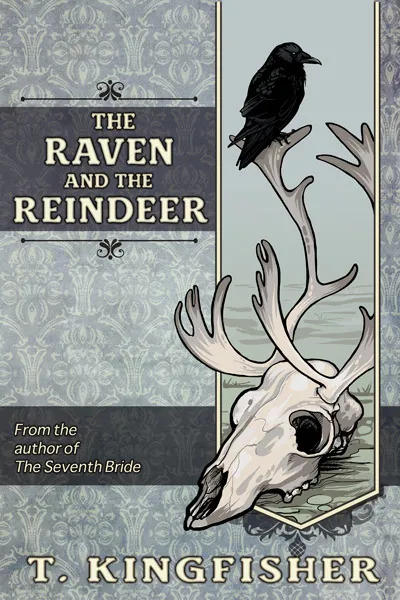
When Gerta’s friend Kay is stolen away by the mysterious Snow Queen, it’s up to Gerta to find him. Her journey will take her through a dangerous land of snow and witchcraft, accompanied only by a bandit and a talking raven.
Can she win her friend’s release, or will following her heart take her to unexpected places?
Content Warning: violence, some gore
happy femslash february, here's a retelling of the snow queen that's ~200 pages (~56k). I really enjoy the style of this book, it hits a really good irreverent vibe; very fantastical fairy tale atmosphere, but also, when the main character asks her grandma what would help her defeat the snow queen, her grandma says: A Knife, Probably. I think folks who enjoy terry pratchett’s style would have fun with this book—it’s more direct, but carries a similar humor. check out this passage
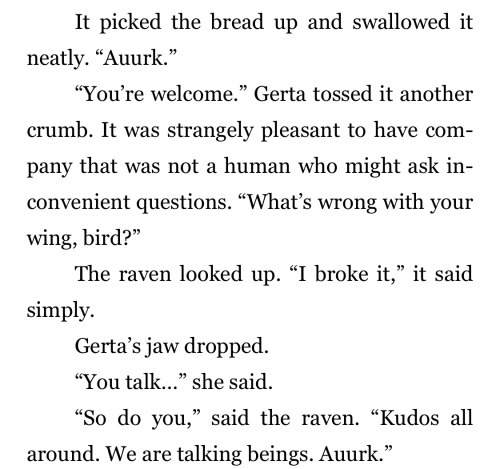
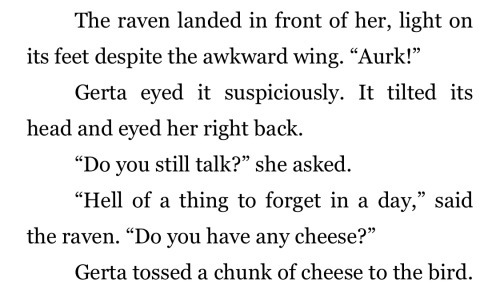

as for the romance… okay if you’ve ever watched that 1950s russian animated snow queen movie and thought ‘wow gerta and the thief girl should’ve run off together’ this is the book for you. I wouldn’t classify this as a romance novel (more of a fairy tale with romance) so the thief girl shows up later in the book and the story is centered more around gerta’s development than a romance, but Look At This

#femslash february#ff recs#recs#yuri#femslash feb recs#this made me look up the movie again#and I did not know there was an english dub#so I went to see how they translated My Favorite Line#and they replace ‘what sentimentality’ with ‘I’m not sorry’. well ok
49 notes
·
View notes